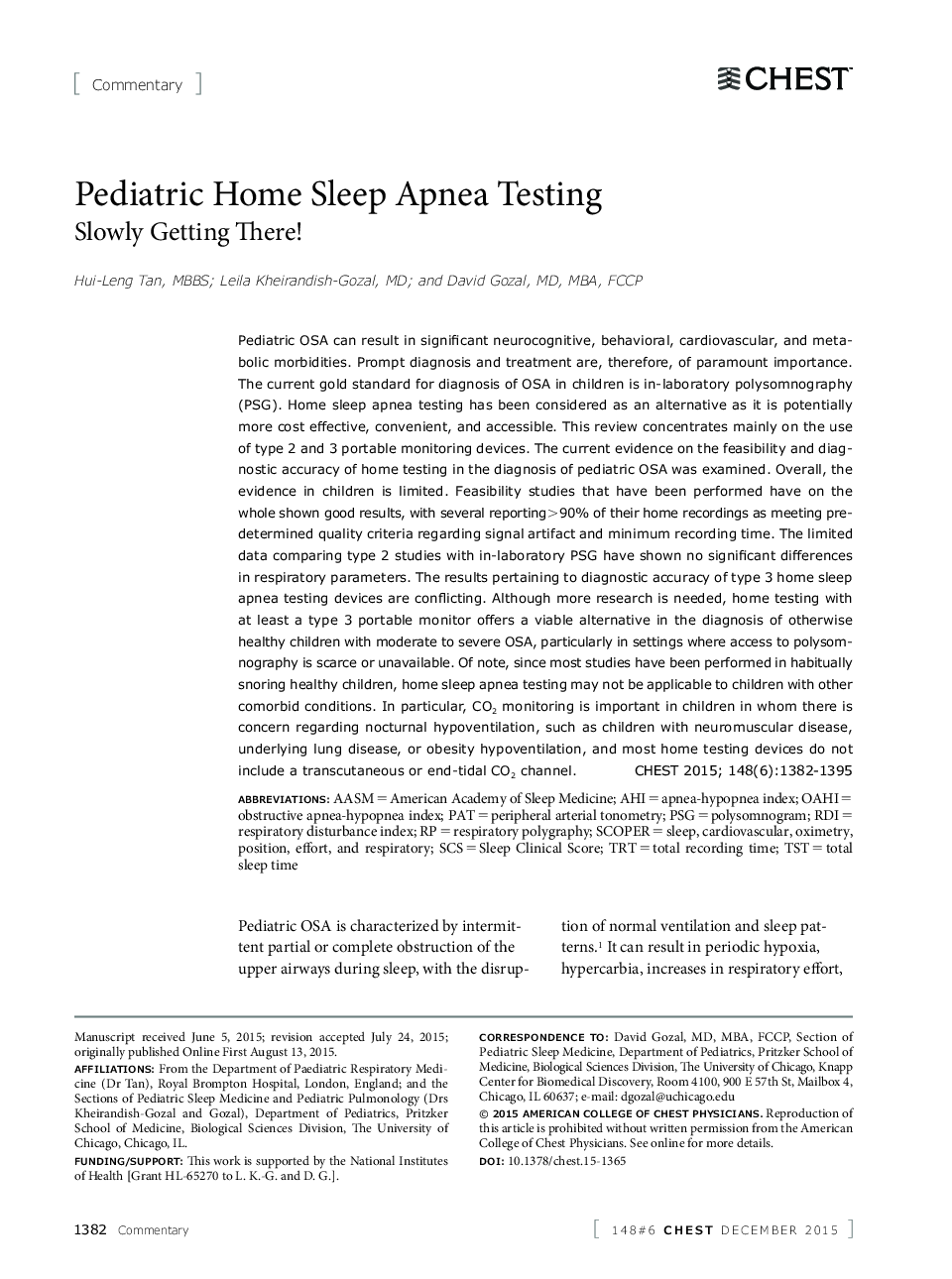| کد مقاله | کد نشریه | سال انتشار | مقاله انگلیسی | نسخه تمام متن |
|---|---|---|---|---|
| 5953543 | 1173305 | 2015 | 14 صفحه PDF | دانلود رایگان |
عنوان انگلیسی مقاله ISI
Pediatric Home Sleep Apnea Testing
ترجمه فارسی عنوان
تست آپنه خواب کودکان
دانلود مقاله + سفارش ترجمه
دانلود مقاله ISI انگلیسی
رایگان برای ایرانیان
کلمات کلیدی
SCsRDIaHITSTAASMTRTObstructive Apnea-Hypopnea IndexAmerican Academy of Sleep Medicine - آکادمی پزشکی خواب آمریکاOAHI - اوهیPeripheral arterial tonometry - تونومتر شریانی محیطیtotal sleep time - زمان خواب کلapnea-hypopnea index - شاخص آپنه-هیپوپنیRespiratory disturbance index - شاخص اختلال تنفسیpat - پاتPSG - پاری سن ژرمنRespiratory polygraphy - پوستر تنفسیPolysomnogram - پولیسونوگرافی
موضوعات مرتبط
علوم پزشکی و سلامت
پزشکی و دندانپزشکی
کاردیولوژی و پزشکی قلب و عروق
چکیده انگلیسی
Pediatric OSA can result in significant neurocognitive, behavioral, cardiovascular, and metabolic morbidities. Prompt diagnosis and treatment are, therefore, of paramount importance. The current gold standard for diagnosis of OSA in children is in-laboratory polysomnography (PSG). Home sleep apnea testing has been considered as an alternative as it is potentially more cost effective, convenient, and accessible. This review concentrates mainly on the use of type 2 and 3 portable monitoring devices. The current evidence on the feasibility and diagnostic accuracy of home testing in the diagnosis of pediatric OSA was examined. Overall, the evidence in children is limited. Feasibility studies that have been performed have on the whole shown good results, with several reporting > 90% of their home recordings as meeting predetermined quality criteria regarding signal artifact and minimum recording time. The limited data comparing type 2 studies with in-laboratory PSG have shown no significant differences in respiratory parameters. The results pertaining to diagnostic accuracy of type 3 home sleep apnea testing devices are conflicting. Although more research is needed, home testing with at least a type 3 portable monitor offers a viable alternative in the diagnosis of otherwise healthy children with moderate to severe OSA, particularly in settings where access to polysomnography is scarce or unavailable. Of note, since most studies have been performed in habitually snoring healthy children, home sleep apnea testing may not be applicable to children with other comorbid conditions. In particular, CO2 monitoring is important in children in whom there is concern regarding nocturnal hypoventilation, such as children with neuromuscular disease, underlying lung disease, or obesity hypoventilation, and most home testing devices do not include a transcutaneous or end-tidal CO2 channel.
ناشر
Database: Elsevier - ScienceDirect (ساینس دایرکت)
Journal: Chest - Volume 148, Issue 6, December 2015, Pages 1382-1395
Journal: Chest - Volume 148, Issue 6, December 2015, Pages 1382-1395
نویسندگان
Hui-Leng MBBS, Leila MD, David MD, MBA, FCCP,
